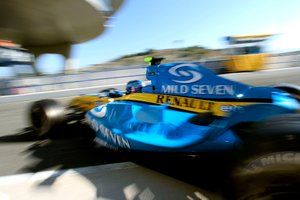
How to become a qualifying master
Extracting the best from a car in qualifying is a key skill for aspiring professionals to learn. James Newbold delves into the guiding principles you need to know to ace a single flying lap

Performance
Our experts' guide on how you can become a better racing driver
The 'Trulli train' is a phrase that Jarno Trulli knows well. It was popular in the early noughties, used to describe the queue of frustrated drivers who would habitually form behind the Italian in the early laps of a grand prix after he had qualified midfield machinery higher than it had any right to stay in race trim.
Yet the passing of time means such things take a lesser significance and Trulli, who scored four pole positions in 256 appearances in Formula 1, has come to adopt the expression as a badge of honour for his exploits in lesser cars.
Share Or Save This Story
Subscribe and access Autosport.com with your ad-blocker.
From Formula 1 to MotoGP we report straight from the paddock because we love our sport, just like you. In order to keep delivering our expert journalism, our website uses advertising. Still, we want to give you the opportunity to enjoy an ad-free and tracker-free website and to continue using your adblocker.


















